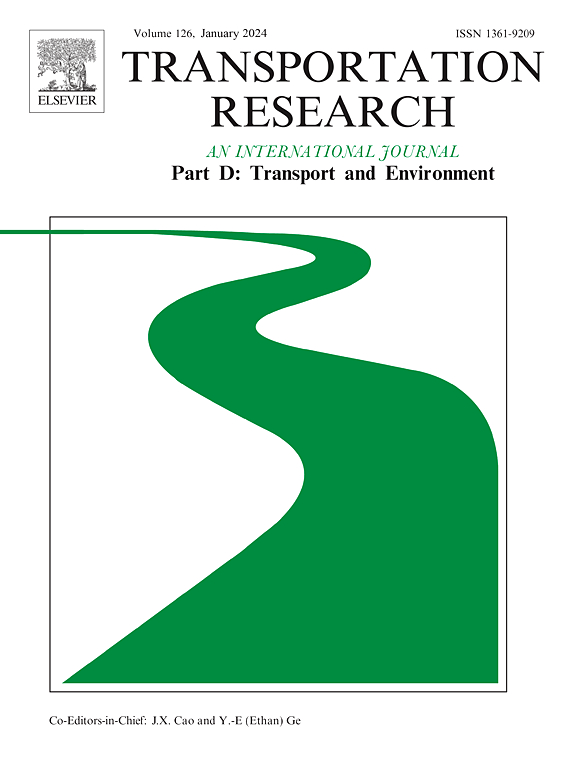大数据,大偏见?影响公共交通和共享微交通一体化的因素
IF 7.7
1区 工程技术
Q1 ENVIRONMENTAL STUDIES
Transportation Research Part D-transport and Environment
Pub Date : 2025-09-18
DOI:10.1016/j.trd.2025.104977
引用次数: 0
摘要
了解是什么推动了共享微交通作为第一/最后一英里(FM/LM)与公共交通的连接,对于加强多式联运至关重要。然而,关于公交连接微移动出行的可靠数据是有限的。研究人员经常使用基于缓冲区的方法从大型数据集中推断FM/LM行程,但这种方法可能会导致研究结果的偏差。这项研究使用了一个新颖的数据集,其中包含数千个用户报告的连接公共交通的电动滑板车旅行,以建立一个基本事实模型。结果表明,更多的FM/LM出行与更高的公交站点和道路密度、更低的住宅和十字路口密度、CBD邻近度、更高的就业率和更低的黑人居民比例相关。此外,我们发现使用基于缓冲区的方法推断的公交连接行程不可避免地导致有偏差的模型输出。这些偏差源于站点特征和公交连接出行模式的异质性。我们强调了推理准确性的权衡,并为未来在交通和微交通整合研究中使用大数据提供了指导。本文章由计算机程序翻译,如有差异,请以英文原文为准。
Big data, big bias? On factors shaping transit and shared micromobility integration
Understanding what drives shared micromobility use as a first-/last-mile (FM/LM) connection to transit is vital for enhancing multimodal travel. However, reliable data on transit-connecting micromobility trips are limited. Researchers often use buffer-based methods to infer FM/LM trips from large datasets, but such methods may cause bias in study results. This study uses a novel dataset with thousands of user-reported transit-connecting e-scooter trips to build a ground-truth model. Results show that more FM/LM trips are associated with higher transit-stop and road density, lower residential and intersection density, CBD proximity, greater employment rate, and lower shares of Black residents. Also, we find that using transit-connecting trips inferred from buffer-based methods unavoidably lead to biased model outputs. These biases stem from heterogeneity in station characteristics and transit-connecting trip patterns. We highlight trade-offs in inference accuracy and offer guidance for the use of big data in future research on transit and micromobility integration.
求助全文
通过发布文献求助,成功后即可免费获取论文全文。
去求助
来源期刊
CiteScore
14.40
自引率
9.20%
发文量
314
审稿时长
39 days
期刊介绍:
Transportation Research Part D: Transport and Environment focuses on original research exploring the environmental impacts of transportation, policy responses to these impacts, and their implications for transportation system design, planning, and management. The journal comprehensively covers the interaction between transportation and the environment, ranging from local effects on specific geographical areas to global implications such as natural resource depletion and atmospheric pollution.
We welcome research papers across all transportation modes, including maritime, air, and land transportation, assessing their environmental impacts broadly. Papers addressing both mobile aspects and transportation infrastructure are considered. The journal prioritizes empirical findings and policy responses of regulatory, planning, technical, or fiscal nature. Articles are policy-driven, accessible, and applicable to readers from diverse disciplines, emphasizing relevance and practicality. We encourage interdisciplinary submissions and welcome contributions from economically developing and advanced countries alike, reflecting our international orientation.

 求助内容:
求助内容: 应助结果提醒方式:
应助结果提醒方式:


